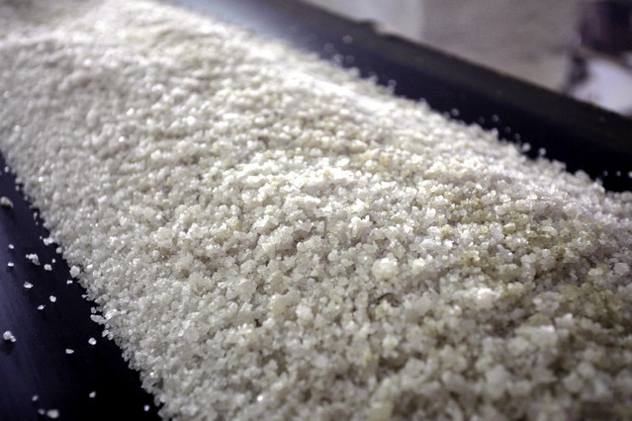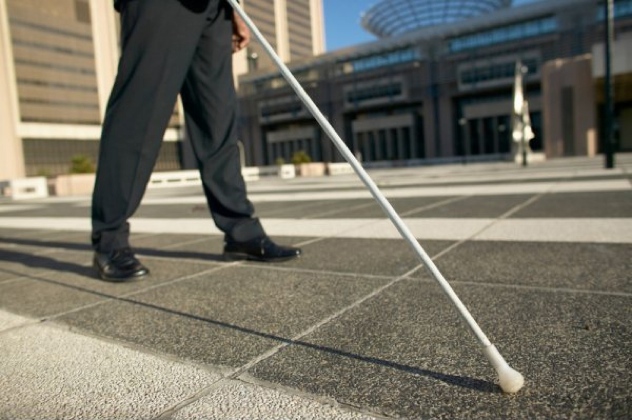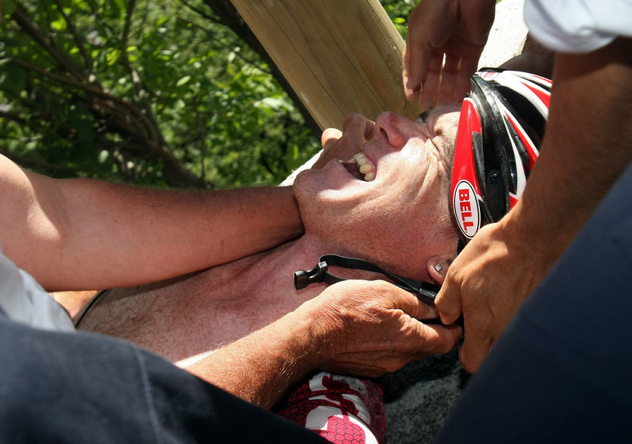 Weird Stuff
Weird Stuff  Weird Stuff
Weird Stuff  Health
Health Ten Confounding New Inventions from the World of Biomedicine
 Creepy
Creepy 10 Death Superstitions That Will Give You the Creeps
 Movies and TV
Movies and TV 10 Movies That Get Elite Jobs Right, According to Experts
 Weird Stuff
Weird Stuff 10 Times Real Laws Were Based on Bizarre Hypotheticals
 Animals
Animals 10 Inspiring Tales of Horses Being Human
 Mysteries
Mysteries Top 10 Haunting Facts About the Ghost Ship MV Alta
 History
History 10 Surprising Stories About the Texas Rangers
 Humans
Humans 10 Philosophers Who Were Driven Mad by Their Own Theories
 Miscellaneous
Miscellaneous 10 Video-Game-Worthy Weapons and Armors from History
 Weird Stuff
Weird Stuff 10 Warning Labels That Exist Because Someone Actually Tried It
 Health
Health Ten Confounding New Inventions from the World of Biomedicine
 Creepy
Creepy 10 Death Superstitions That Will Give You the Creeps
Who's Behind Listverse?

Jamie Frater
Head Editor
Jamie founded Listverse due to an insatiable desire to share fascinating, obscure, and bizarre facts. He has been a guest speaker on numerous national radio and television stations and is a five time published author.
More About Us Movies and TV
Movies and TV 10 Movies That Get Elite Jobs Right, According to Experts
 Weird Stuff
Weird Stuff 10 Times Real Laws Were Based on Bizarre Hypotheticals
 Animals
Animals 10 Inspiring Tales of Horses Being Human
 Mysteries
Mysteries Top 10 Haunting Facts About the Ghost Ship MV Alta
 History
History 10 Surprising Stories About the Texas Rangers
 Humans
Humans 10 Philosophers Who Were Driven Mad by Their Own Theories
 Miscellaneous
Miscellaneous 10 Video-Game-Worthy Weapons and Armors from History
10 More Common Medical Myths
Medical myths are a popular Listverse subject, and they’re highly relevant to everybody’s welfare. In this list, we will destroy yet another ten medical myths which, incredibly, have managed to stick around. They may even be influencing your perspectives—or jeopardizing your personal safety—right now. So read on:

We all dread the condition of hypothermia, but few of us understand exactly what it is, and how easily we may contract it. Hypothermia is commonly considered to be synonymous with “freezing to death.” In fact, hypothermia is less of a freezing effect, and more of a simple reduction of the body’s core temperature.
Hypothermia occurs when your core temperature drops below thirty-five degrees Celsius (ninety-five degrees Fahrenheit). Surprisingly, this does not only take place in cold environments. In summer, exposure to a warm wind after getting wet from swimming may trigger severe hypothermia. Cold river water may have the same effect, and even swimming in warm, tropical water can gradually drain your body temperature to dangerous levels, since the water conducts heat away from your body much more effectively than air.

Sodium Free: many labels proclaim this standard as if it is an achievement critical to your health and well-being. Based on some very weak studies fraught with uncertainty, sodium chloride (also known as table salt) has been blamed for a variety of medical conditions—resulting in calls for extensive reduction or even elimination of it in food products.
But it turns out that only a fraction of food items actually have too much salt, and studies have shown that few medical conditions require you to cut your salt intake. In fact, certain health challenges may actually be mitigated by increased salt content in the diet, provided that it’s non-refined, natural salt with a mineral spectrum more amenable to the composition of human blood.

When presented with images of devastating car crashes, in which the forces of physics have conspired to completely annihilate vehicles, we easily understand how death could result from external crushing injuries or fatal strikes to the head.
But people are at times perplexed to hear of car crash victims who suffered relatively little damage. Even if you are firmly belted in and avoid being squeezed or smashed against the vehicle, death can result. Here’s why:
When a car is traveling at a rapid speed, your internal organs are traveling at the same speed as the vehicle. And when the car stops suddenly, your body also slams to halt—often propelling your internal organs forwards to collide with bones and squeeze through rib gaps, resulting in fatal lacerations. This phenomenon is known as shear-related blunt trauma.

Tarantulas are firmly entrenched in our collective psyche as creatures of the most dangerous variety, thought to cause death or serious injury with a single bite. But contrary to popular belief, these enormous, hairy—and only mildly venomous—spiders, are actually rather gentle members of the arachnid class.
Tarantulas live in subtropical grassland, mountain, and rainforest habitats, and may prey on a variety of invertebrates and even small mammals or reptiles. When a human handles a tarantula, a bite may occur if the animal feels threatened—but never out of aggression. Swelling, redness, and sharp pain may follow, but human deaths are nearly unheard of from both wild and pet tarantulas. Handling a tarantula does not put you at risk of a fatal bite. The greater risk is actually from the spider shooting its stinging hairs into your eyes.

As humans, we often like to think in terms of black and white in subjects as varied as ethics, politics, religion, and even the classification of animal species. In the area of health and disability, sparing a thought for the grey, in-between area is especially important.
We often think of blindness as the opposite of vision, characterized by an absence of sight in the affected individual. In fact, blindness is a good example of a “grey area”—neither here nor there—with “legal blindness” encompassing a range of variations in sight. Some individuals who are legally blind may see only rough shapes, while others may have extremely limited fields of view or focusing ability. In other individuals, the problem may be identifying shapes. So the chief surprise is that most blind individuals are capable of seeing at least something.
“Don’t get so mad! You’ll give yourself an ulcer!” We often hear these words from well-meaning observers who base their comments on the established idea that stress, emotional negativity, or even spicy food can lead to stomach ulcers and a host of serious gastrointestinal symptoms.
More accurate medical research, however, suggests that harmful stomach bacteria, rather an “acid levels” or stress, are in fact to blame for abdominal agony attacks. The H. pylori bacteria, believed to be spread via person-to-person contact, apparently weakens the mucus lining of the stomach, paving the way for gastric acid to attack our delicate stomach lining.
 Stretching before exercise is instinctive to most amateur athletes as the surefire step for avoiding injuries and enhancing sports performance. But researchers have discovered that those extra extensions can actually curtail your success. Studies indicate that extensive stretching before a run can reduce human efficiency by more than five percent, while a report from Italy found that stretching impedes effective cycling.
Stretching before exercise is instinctive to most amateur athletes as the surefire step for avoiding injuries and enhancing sports performance. But researchers have discovered that those extra extensions can actually curtail your success. Studies indicate that extensive stretching before a run can reduce human efficiency by more than five percent, while a report from Italy found that stretching impedes effective cycling.
It is possible that stretching is simply additional exertion that drains the body and reduces the possibility of a strong start. Interestingly, prehistoric humans would never have had a chance to stretch, in many cases, when a predator appeared.

In recent years, medical professionals and health commentators have expressed concern over the possible link between the underwires in bras and other shaping garments, and increased cases of breast cancer. The idea was that the unnatural, focused pressure of the wire against the breast tissue restricted the flow of lymph fluid—the body’s second major fluid system—through the lymph nodes and transport ducts. Just as reduction in blood flow causes oxygen starvation, reduced lymph flow was reputed to provoke retention of carcinogenic body toxins in the breast tissues.
Research has indicated, however, that a link does not appear to exist between underwire use and lymph flow—and there’s certainly no known link with any type of cancer.

Heart attacks are the subject of several myths—all of which are important to dispel. One concept embedded in popular wisdom is that heart attacks (which can happen to young, as well as the middle-aged and the elderly) result from excessive exertion. This would mean that rest, and a lifestyle free from exertion, must be necessary for a safer recovery.
But it turns out that a sedentary lifestyle—rather than physical activity—actually lies behind many heart conditions. Following a heart attack, sedentary activity simply perpetuates the cycle leading to heart disease. In fact, the correct medical advice is generally to begin a moderate program of exercise, in order to rebuild the heart’s strength and improve circulation.

Spinal injuries are among the most devastating—yet physiologically simple—injuries we can suffer. A common myth is that spinal injuries are always permanent; to be disabled by such an injury once, means to be forever disabled.
In fact, the range of spinal injuries is as grey as the cord matter itself. Some quadriplegics eventually regain their ability to walk, while many others may experience partial recovery.
In another myth relating to spinal injuries—in this case those suffered by motorcyclists—it has long been thought that a smooth helmet can reduce the risk of such injuries by allowing your head to slide along the road, rather than stop suddenly due to friction. But a scientific review of cases has found no statistically significant differences, either for or against helmets, as far as spinal cords are concerned.
Ron Harlan investigates the mysteries of nature, the human body, and the bizarre findings that often crop up on this planet. He is a freelance writer and student of science.









